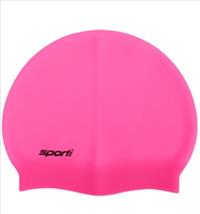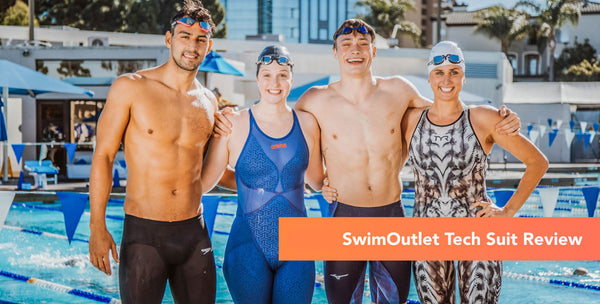The Ins and Outs of Open Water Swim Caps
November 19, 2014

Swim caps make perfect stocking stuffers! Easy to wrap, affordable with styles and designs for all types of swimmers. We asked our in-house triathlon expert Jarrod Shoemaker to break down the different swim cap options for open water swimmers.
By Jarrod Shoemaker, 2008 Olympic triathlete
There are quite a few types of swim caps on the market, and quite a few different varieties. This article specifically focuses on which types of caps are good for open water swimming.
We can rule out a few caps, such as kids fun swim caps and lycra caps (Unless you are racing lifeguard races in which case lycra caps are the norm). Lycra caps allow water to pass through them easily, they are not bad per se, but do not keep your hair dry and are not as fast as latex, silicone or neoprene caps.

Most races use latex caps as they are cheaper for the races to produce, so if you are racing triathlons or open water swimming event, you most likely have used a latex cap. Most competitive swimmers, like those at the Olympics are using silicone caps, since they are a bit more sturdy, and more hydrodynamic. I have a couple latex caps, silicone caps and neoprene caps that I take with me to open water swims or races so I can use the correct cap depending on water temperature.
Latex
Latex swim caps are not quite as durable as silicone caps, and are also a bit thinner. Latex caps can get a bit sticky as their lives wear on, unless you put baby powder into them to dry them out. They tend to break down a bit after many uses and are a bit sticker, tending to pull hair, if put on incorrectly.

If you are swimming in a warmer pool or body of water, latex is better to wear as the material is thinner allowing more heat to dissipate through your head.
Highlights:
- Thinner material
- Allows more heat transfer, better in warmer open water
- Moderate usage before caps will deteriorate
Silicone
Silicone caps are a bit thicker, and they are very good for open water swimming in slightly colder water. Since they are a bit thicker, they hold the heat in your head more.

Personally, I prefer silicone caps as they seem to last longer, and do not get as sticky after many uses as a latex cap will.
Highlights:
- Easy to put on and feel on the head
- Thicker material
- Thicker material keeps heat in, good for cooler open water
- Long usage before caps will deteriorate
Neoprene
Neoprene caps are made specifically for swimming in colder water. They are very thick and made from the same material as wetsuits. Some neoprene caps come with a chin strap to fully cover your ears as well. Typically you will only wear a neoprene cap when water temperatures drop below 62 degrees.

Be sure to try on a neoprene cap before you race in it, as they are much tighter than other caps and can feel restrictive.
Highlights:
- Very thick material
- For cold water
- Can feel very restrictive and tight
Conclusion
Latex and Silicone caps come in some fun styles and colors. When swimming open water it is best to wear a bright colored cap so boaters, jet skiers, swimmers or float planes can see you (yes I have almost had a plane land on me in a lake in Florida even with a bright orange cap on!).



